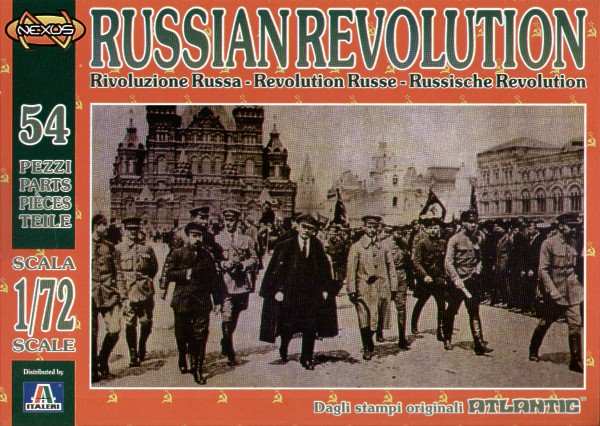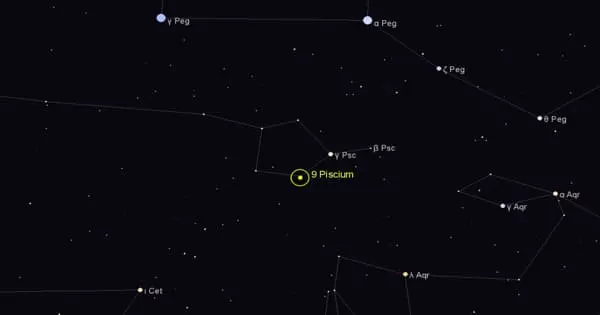The Russian Revolution is the collective term for the series of revolutions in Russia in 1917, which destroyed the Tsarist autocracy and led to the creation of the Soviet Union. In the first revolution of February 1917 (March in the Gregorian calendar) the Czar was deposed and replaced by a Provisional government. In the second revolution of October that year the Provisional Government was removed and replaced with a Bolshevik (Communist) government.
Assignment on Russian Revolution
Introduction:
The Russian Revolution is the collective term for the series of revolutions in Russia in 1917, which destroyed the Tsarist autocracy and led to the creation of the Soviet Union. In the first revolution of February 1917 (March in the Gregorian calendar) the Czar was deposed and replaced by a Provisional government. In the second revolution of October that year the Provisional Government was removed and replaced with a Bolshevik (Communist) government.
The February Revolution (March 1917) was a revolution focused around St Petersburg. In the chaos, members of the Imperial parliament or Duma assumed control of the country, forming the Russian Provisional Government. The army leadership felt they did not have the means to suppress the revolution and Czar Nicholas II of Russia, the last Czar of Russia, abdicated, effectively leaving the Provisional Government in power. The Soviets (workers’ councils) which were led by more radical socialist factions initially permitted the Provisional government to rule, but insisted on a perogative to influence the government and control various militias. The February Revolution took place in the context of heavy military setbacks during the First World War, which left much of the army in a state of mutiny.
A period of dual power ensued, during which the Provisional Government held state power while the national network of Soviets, led by socialists, had the allegiance of the lower-class citizens and the political left. During this chaotic period there were frequent mutinies and many strikes. When the Provisional Government chose to continue fighting the war with Germany, the Bolsheviks and other socialist factions campaigned for the abandonment of the war effort. The Bolsheviks formed workers militias under their control into the Red Guards (later the Red Army) over which they exerted substantial control.
In the October Revolution (November on the Gregorian calendar), the Bolshevik party, led by Vladimir Lenin, and the workers’ Soviets, overthrew the Provisional Government in Petrograd. The Bolsheviks appointed themselves as leaders of various government ministries and seized control of the countryside, establishing the Cheka to ruthlessly quash dissent. To end the war, the Bolshevik leadership signed the Treaty of Brest-Litovsk with Germany in March 1918. However a brutal civil war erupted between the “Red” (Bolshevik), and “White” (anti-Bolshevik), factions, which was to continue for several years, with the Bolsheviks ultimately victorious. In this way the Revolution paved the way for the USSR. While many notable historical events occurred in Moscow and Petrograd, there was also a broadly-based movement in cities throughout the state, among national minorities throughout the empire, and in the rural areas, where peasants took over and redistributed land.
Background:
At the start of 1917 the country was ripe for revolution — growing rapidly, creating expanded social opportunities but also great uncertainty. Poor villagers more and more often migrated between agrarian and industrial work environments, and many relocated entirely, creating a growing urban labor force. A mid class of white-collar employees, businessmen, and professionals (the latter group comprising doctors, lawyers, teachers, journalists, engineers, etc.) was on the rise. Even nobles had to find new ways to subsist in this changing economy, and contemporaries spoke of new classes forming (proletarians and capitalists, for example), although these classes were also divided along crisscrossing lines of status.
It was becoming harder to speak of clearly-defined social groups or boundaries. Not only were groups fractured in various ways, their defining boundaries were also increasingly blurred by migrating peasants, worker intellectuals, gentry professionals, and the like. There was a general sense that the texture of people’s lives was being transformed by a spreading commercial culture which remade the surfaces of material life (buildings, store fronts, advertisements, fashion, clocks and machines) and nurtured new objects of desire.
By 1917, the growth of political consciousness, the impact of revolutionary ideas, and the weak and inefficient system of government (which had been debilitated further by its participation in World War I), should have convinced the emperor, Nicholas II, to take the necessary steps towards reform. In January 1917, in fact, Sir George Buchanan, the British Ambassador in Russia, advised the emperor to “break down the barrier that separates you from your people to regain their confidence.” In response to his advice, Nicholas effectively disowned Buchanan.
Many of the people of Russia resented the autocracy of Czar Nicholas II and the corrupt and anachronistic elements in his government. He was seen as being out of touch with the needs and aspirations of the Russian people, the vast majority of whom were victims of the wretched socio-economic conditions which prevailed. Socially, Tsarist Russia stood well behind the rest of Europe in its industry and farming, resulting in few opportunities for fair advancement on the part of peasants and industrial workers. Economically, widespread inflation and food shortages in Russia contributed to the revolution. Militarily, inadequate supplies, logistics, and weaponry led to heavy losses that the Russians suffered during World War I; this further strengthened Russia’s view of Nicholas II as weak and unfit to rule. Ultimately, these factors, coupled with the development of revolutionary ideas and movements (particularly during the years following the 1905 Bloody Sunday Massacre), led to the Russian Revolution.
A. Economic changes:
An elementary theory of property, believed by many peasants, was that land should belong to those who work it. At the same time, peasant life and culture was changing constantly. Change was facilitated by the physical movement of growing numbers of peasant villagers who migrated to and from industrial and urban environments, but also by the migration of city culture into the village through material goods, the press, and word of mouth.
Workers also had good reasons for discontent: overcrowded housing with often deplorable sanitary conditions, long hours at work (on the eve of the war a 10-hour workday six days a week was the average and many were working 11–12 hours a day by 1916), constant risk of injury and death from very poor safety and sanitary conditions, harsh discipline (not only rules and fines, but foremen’s fists), and inadequate wages (made worse after 1914 by steep war-time increases in the cost of living). At the same time, urban industrial life was full of benefits, though these could be just as dangerous, from the point of view of social and political stability, as the hardships. There were many encouragements to expect more from life. Acquiring new skills gave many workers a sense of self-respect and confidence, heightening expectations and desires. Living in cities, workers encountered material goods such as they had never seen while in the village. Most important, living in cities, they were exposed to new ideas about the social and political order.
B. Social changes:
The social causes of the Russian Revolution mainly came from centuries of oppression of the lower classes by the Tsarist regime, and Nicholas’s failures in World War I. While rural agrarian peasants had been emancipated from serfdom in 1861, they still resented paying redemption payments to the state, and demanded communal tender of the land they worked. The problem was further compounded by the failure of Sergei Witte’s land reforms of the early 1900s. Increasing peasant disturbances and sometimes full revolts occurred, with the goal of securing ownership of the land they worked. Russia consisted mainly of poor farming peasants, with 1.5% of the population owning 25% of the land.
The rapid industrialization of Russia also resulted in urban overcrowding and poor conditions for urban industrial workers (as mentioned above). Between 1890 and 1910, the population of the capital, Saint Petersburg, swelled from 1,033,600 to 1,905,600, with Moscow experiencing similar growth. This created a new ‘proletariat’ which, due to being crowded together in the cities, was much more likely to protest and go on strike than the peasantry had been in previous times. In one 1904 survey, it was found that an average of sixteen people shared each apartment in Saint Petersburg, with six people per room. There was also no running water, and piles of human waste were a threat to the health of the workers. The poor conditions only aggravated the situation, with the number of strikes and incidents of public disorder rapidly increasing in the years shortly before World War I.
World War I only added to the chaos. Conscription swept up the unwilling in all parts of Russia. The vast demand for factory production of war supplies and workers caused many more labor riots and strikes. Conscription stripped skilled workers from the cities, who had to be replaced with unskilled peasants, and then, when famine began to hit due to the poor railway system, workers abandoned the cities in droves to look for food. Finally, the soldiers themselves, who suffered from a lack of equipment and protection from the elements, began to turn against the Tsar. This was mainly because, as the war progressed, many of the officers who were loyal to the Tsar were killed, and were replaced by discontented conscripts from the major cities, who had little loyalty to the Tsar.
C. Political changes:
Many sections of the crown had reason to be dissatisfied with the existing autocracy. Nicholas II was a deeply conservative ruler and maintained a strict authoritarian system. Individuals and society in general were expected to show self-restraint, devotion to community, deference to the social hierarchy, and a sense of duty to country. Religious faith helped bind all of these tenets together as a source of comfort and reassurance in the face of difficult conditions and as a means of political authority exercised through the clergy. Perhaps more than any other modern monarch, Nicholas II attached his fate and the future of his dynasty to the notion of the ruler as a saintly and infallible father to his people. This idealized vision of the Romanov monarchy blinded him to the actual state of his country. With a firm belief that his power to rule was granted by Divine Right, Nicholas assumed that the Russian people were devoted to him with unquestioning loyalty. This ironclad belief rendered Nicholas unwilling to allow the progressive reforms that might have alleviated the suffering of the Russian people. Even after the 1905 revolution spurred the Tsar to decree limited civil rights and democratic representation, he worked to limit even these liberties in order to preserve the ultimate authority of the crown.
Despite constant oppression, the desire of the people for democratic participation in government was strong. Since the Age of Enlightenment, Russian intellectuals had promoted Enlightenment ideals such as the dignity of the individual and of the rectitude of democratic representation. These ideals were championed most vociferously by Russia’s liberals, although populists, Marxists, and anarchists also claimed to support democratic reforms. A growing opposition movement had begun to challenge the Romanov monarchy openly well before the turmoil of World War I. Dissatisfaction with Russian autocracy culminated in the huge national upheaval that followed the Bloody Sunday massacre of January 1905, in which hundreds of unarmed protesters were shot by the Tsar’s troops. Workers responded to the massacre with a crippling general strike, forcing Nicholas to put forth the October Manifesto which established a democratically elected parliament (the State Duma). The Tsar undermined this promise of reform but a year later with Article 87 of the 1906 Fundamental State Laws, and subsequently dismissed the first two Dumas when they proved uncooperative. Unfulfilled hopes of democracy fueled revolutionary ideas and violent outbursts targeted at the monarchy.
One of the Tsar’s principal rationales for risking war in 1914 was his desire to restore the prestige that Russia had lost amid the debacles of the Russo-Japanese war. Nicholas also sought to foster a greater sense of national unity with a war against a common and ancient enemy. The Russian Empire was an agglomeration of diverse ethnicities that had shown significant signs of disunity in the years before the First World War. Nicholas believed in part that the shared peril and tribulation of a foreign war would mitigate the social unrest over the persistent issues of poverty, inequality, and inhuman working conditions. Instead of restoring Russia’s political and military standing, World War I led to the horrifying slaughter of Russian troops and military defeats that undermined both the monarchy and society in general to the point of collapse.
Revolution:
A. The February Revolution:
On 23rd February 1917 the International Women’s Day Festival in St. Petersburg turned into a city-wide demonstration, as exasperated women workers left factories to protest against food shortages. Men soon joined them, and on the following day – encouraged by political and social activists – the crowds had swelled and virtually every industry, shop and enterprise had ceased to function as almost the entire populace went on strike.
Nicholas ordered the police and military to intervene, however the military was no longer loyal to the Tsar and many mutinied or joined the people in demonstrations. Fights broke out and the whole city was in chaos. On October 28th over 80,000 troops mutinied from the army and looting and rioting was widespread.
Faced with this untenable situation Tsar Nicholas abdicated his throne, handing power to his brother Michael. However Michael would not accept leadership unless he was elected by the Duma. He resigned the following day, leaving Russia without a head of state.
The Provisional Government:
After the abdication of the Romanovs a Provisional Government was quickly formed by leading members of the Duma and recognised internationally as Russia’s legal government. It was to rule Russia until elections could be held. However it’s power was by no means absolute or stable. The more radical Petrograd Soviet organisation was a trade union of workers and soldiers that wielded enormous influence. It favoured full-scale Socialism over more moderate democratic reforms generally favoured by members of the Provisional Government.
After centuries of Imperial rule Russia was consumed with political fervour, but the many different factions, all touting different ideas, meant that political stability was still a long way off directly after February Revolution.
Lenin Returns to Russia:
One person keen to take advantage of the chaotic state of affairs in St. Petersburg was Vladimir Ilyich Ulyanov – aka Lenin. Lenin had spent most of the 20th Century travelling and working and campaigning in Europe – partly out of fear for his own safety, as he was known Socialist and enemy of the Tsarist regime. However with the Tsar under arrest and Russian politics in chaos, Lenin saw the opportunity to lead his party, the Bolsheviks, to power. From his home in Switzerland he negotiated a return to Russia with the help of German authorities. (As a proponent of withdrawing Russia from the Great War, the Germans were willing to facilitate Lenin’s passage back via a ‘sealed train’.)
Lenin’s return in April of 1917 was greeted by the Russian populace, as well as by many leading political figures, with great rapture and applause. However, far from uniting the fractious parties, he immediately condemned the policies and ideologies of both the Provisional Government and the Petrograd Soviet. In his April Theses, published in the Bolshevik newspaper Pravda, he advocated non-co-operation with the liberals (ie. non-hardline Communists) and an immediate end to the war.
At first his uncompromising stance served to isolate Lenin and the Bolsheviks, however with powerful slogans like ‘Peace, land and bread,’ Lenin begin to win the hearts of the Russian people – who were increasingly unable to stomach war and poverty.
Summer of 1917:
During the summer of 1917 Lenin made several attempts to invoke another revolution the likes of which had taken place in February, with the aim of overthrowing the Provisional Government. When the Machine Gun Regiment refused to leave Petrograd (as St. Petersburg was then known) for the frontline Lenin sought to manoeuvre them instead into making a putsch. However Kerensky, arguably the most important figure of the time – a member of both the Provisional Government and Petrograd Soviet – adeptly thwarted the coup. Experienced troops arrived in the city to quell any dissidents and the Bolsheviks were accused of being in collusion with the Germans. Many were arrested whilst Lenin escaped to Finland.
Despite this PR disaster Lenin continued plotting and scheming. Meanwhile Kerensky suffered his own political setbacks and even had to appeal to the Bolsheviks for military aid when he feared his Minister of War, Kornilov, was aiming for a military dictatorship. By autumn the Bolsheviks were climbing into the ascendency, winning majority votes within the Petrograd and Moscow Soviets. Leon Trotsky was elected as president of the former.
B. The October Revolution:
(Nb. By the Julian Calendar used in Russia at the time, the revolution took part in November 1917, and is therefore often referred to as the November Revolution)
With Russian politics still in a state of constant flux Lenin realised that now was the time to capitalise on his party’s popularity. He planned a coup d’etat that would overthrow the increasingly ineffective Provisional Government and replace them with the Bolsheviks. On October 10th he held a famous meeting with twelve party leaders, and tried to persuade them that a revolution was required. Despite receiving the backing of only 10 of them plotting went ahead.
October 24th was the date decided upon, and on that day troops loyal to the Bolsheviks took up crucial positions in the city, such as the main telephone and telegraph offices, banks, railroad stations, post offices, and major bridges. Guards commissioned by the Provisional Government, who had got wind of the plot, fled or surrendered without a fight. By the 25th October every key building in St. Petersburg was under Bolshevik control, except the Winter Palace where Kerensky and the other Ministers were holed up with a small guard.
At 0900 of that day Kerensky fled the Palace by car, never to return to Russia. On the 26th the Palace was taken with barely a shot fired, and Lenin’s October Revolution had been achieved with the bare minimum of drama or bloodshed.
Aftermath and Consequences:
Despite being allowed to seize power so easily Lenin soon discovered that his support was far from absolute. His Peace Policy with the Germans was particularly unpopular as it ceded large amounts of Russian territory. Shortly after the October Revolution, the Russian Civil War broke out between the ‘Reds’ (Communists) and the ‘Whites’ (Nationalists, Conservatives, Imperialists and other anti-Bolshevik groups). After a bloody four year struggle Lenin and the Reds won, establishing the Soviet Union in 1922, at an estimated cost of 15 million lives and billions of roubles. In 1923 Lenin died and Stalin took over the Communist Party, which continued to rule Russia until 1991 when the USSR was dissolved.
The Russian revolution and the world:
Trotsky said that the goal of socialism in Russia would not be realized without the success of the world revolution. Indeed, a revolutionary wave caused by the Russian Revolution lasted until 1923. Despite initial hopes for success in the German Revolution, in the short-lived Hungarian Soviet Republic and others like it, no other Marxist movement succeeded in keeping power in its hands.
This issue is subject to conflicting views on the communist history by various Marxist groups and parties. Stalin later rejected this idea, stating that socialism was possible in one country.
The confusion regarding Stalin’s position on the issue stems from the fact that he, after Lenin’s death in 1924, successfully used Lenin’s argument—the argument that socialism’s success needs the workers of other countries in order to happen—to defeat his competitors within the party by accusing them of betraying Lenin and, therefore, the ideals of the October Revolution.
Conclusion:
In conclusion, the working people of Russia were tired of being pushed so hard so they started to protest against the government; the protests were successful and the revolution was triumphal. They lost 1500 people but were victorious. They made a new government, which immediately appointed people to areas that needed attention. The people wanted a good government, and for a while they got exactly what they wanted.
THe outcome of the revolution was this. The imperial government was quickly scattered. Two new bodies quickly exercised effective political power, the Retrograde Soviet of Workers’ and Soldiers’ Deputies and a Provisional Government formed by the committed of the Duma. The Soviet, immediately appointed a commission to cope with the problem of ensuring a food supply for the capital and ordered the release of the thousands of political prisoners. On February 28 the Soviet decided to arrest Nicholas’ ministers and began publishing an official paper, Izvestia (Russian for “News”). On March 1 it issued it’s famous Order No. 1. What this Order said was that the soldiers and the sailors in the navy were now under Soviet control and were to elect committees that would exercise exclusive.
















